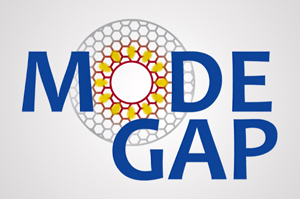02 Oct 2013
Collaboration between Coriant and A1, part of Telekom Austria, achieves first 400G field trial.
Coriant, a developer of optical transport solutions, and A1, subsidiary of Telekom Austria, have completed the first demonstration of a fiber-optic capacity upgrade in a live network environment using Space Division Multiplexing. The successful field trial also included the first-ever demonstration of 400G transmission in Austria.Coriant last week presented several papers on a variety of optical communication advances and subjects at the 39th European Conference and Exhibition on Optical Communication (ECOC 2013).
Conventional single mode fiber (SMF) transmission has been optimized over the past decade to carry more and more parallel channels of higher modulation speeds achieving 96x100G (9.6 terabits) capacity in many current commercial systems. But further capacity increases in single mode systems are restricted due to fundamental limits of transmission, such as defined by the Shannon–Hartley theorem.
How SDM works
Space Division Multiplexing helps overcome such technical constraints and expands capacity by a factor of 10 or more. SDM utilizes multiple parallel WDM systems in a single fiber to increase throughput by using additional "spatial" modes. Coriant and A1 say that, as traffic growth exhausts available capacity of SMF, technologies such as SDM-over-multimode fiber offer a promising solution for high-capacity network scalability.
The Austrian 400G field trial ran over a 660km route between Salzburg and Vienna, using the 8-quadrature-amplitude-modulation (8-QAM) transmission format, which significantly increases transmission reach compared to alternative approaches. The successful trial in a production network environment included 400G transmission co-propagated with 40G and 100G on A1's currently installed Coriant hiT 7300 optical transport systems.
The trial, which was conducted over A1's 100G-equipped WDM backbone network based on Coriant hiT 7300 Intelligent Optical Transport systems, included field-deployed fibers with in-line multi-mode spans and multi-mode amplifiers. The multi-rate, multi-distance trial included a mix of 100G and 400G optical transmission links.
Marcus Grausam, CTO of A1, commented, "This field trial highlights the future-proofing potential of our backbone network. A capacity of 400 Gbit/s means that some 5,000 users can simultaneously watch HDTV or video streaming or download from the internet via a single fiber. The trial was an important step towards deepening our collaboration with Coriant and deploying our next-generation technologies."
100G coherent optical transmission is expected be at the heart of long-haul networks for some years to come, yet even these data rates are not thought to be enough to cope with future demand as adoption of high-bandwidth applications by consumers and businesses increases over time.

Gunther Ottendorfer, Group CTO of the Telekom Austria Group, commented, "Testing 400G and SDM both reflect our ongoing commitment to meeting our customers' evolving bandwidth hunger - today, and well into the future. We believe there will be a need for a new approach to maximizing capacity in the network beyond 2020, and we were very pleased at how straightforward Space Division Multiplexing technology worked in our laboratory test."
Uwe Fischer, Chief Technology Officer, Coriant, added, "We are pleased to deepen our relationship with A1 and the Telekom Austria Group by demonstrating the future potential of high-capacity optical transmission, while at the same time validating the upgrade capability of their deployed transport systems from Coriant."
Coriant conducted a part of this technology initiative in co-operation with ModeGap, a collaborative R&D project supported under the European Union to create the SDM technology.
About the Author
Matthew Peach is a contributing editor tooptics.org.
| © 2025 SPIE Europe |
|